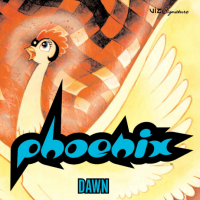"Hi no Tori" ("Phoenix" ) is a 12-part masterpiece by manga legend Osamu Tezuka. Started in 1954, Tezuka worked on the manga until his death in 1989. Acclaimed for both its story and style, "Phoenix" rises above the greatness of Tezuka's "Astro Boy" or "Black Jack" — it was, in translator Frederik L. Schodt's words, an "attempt to push the boundaries of what was possible with manga at the time, both intellectually and artistically, and examine the meaning of life."
Phoenix, Vol. 1 — 12, by Osamu Tezuka, Translated by Frederik L. Schodt.
VIZ, Manga.
Each volume is self-contained and linked by the theme of humanity's search for immortality with the recurring presence in each issue of a legendary fire bird, purported to guard the "universal life-force."
Set in different eras, from the last days of mankind to the dawn of civilization, the volumes seesaw from the future to the past and back again, even stopping in at the 21st century. Artistically experimental, Tezuka's images sparked modern stylistic revolutions in visual design. He plays with framing and perspective as the narratives intensely engage with human concerns: betrayal, love, compassion, ambition. The epic scope of this series will amaze readers on several levels, drawing critical comparisons to everything from Shakespearean tragedy to early Walt Disney.
You don't have to be a manga fan to appreciate "Phoenix"; if you're looking to experience Japanese pop culture at its zenith, rise and join the worldwide legion of Tezuka fans.
Read archived reviews of Japanese classics at jtimes.jp/essential.

















With your current subscription plan you can comment on stories. However, before writing your first comment, please create a display name in the Profile section of your subscriber account page.